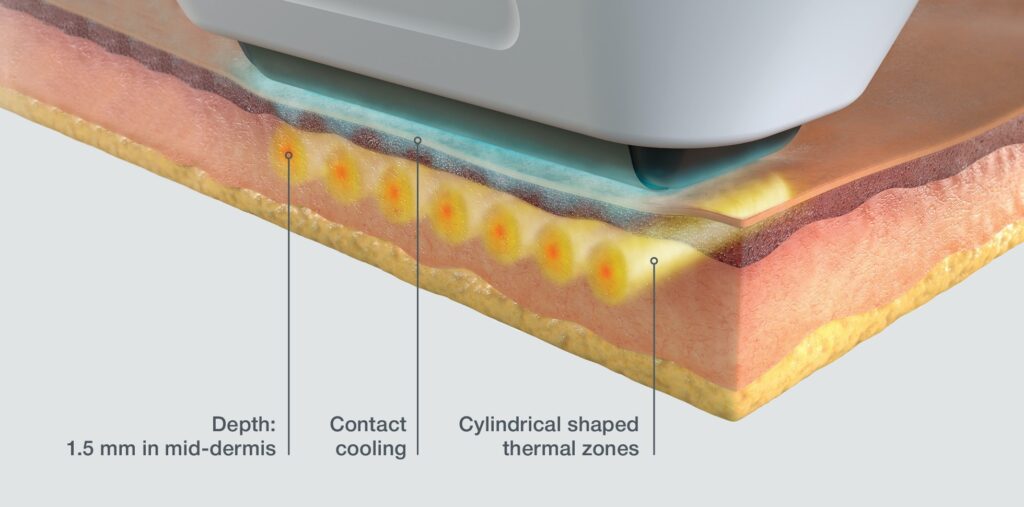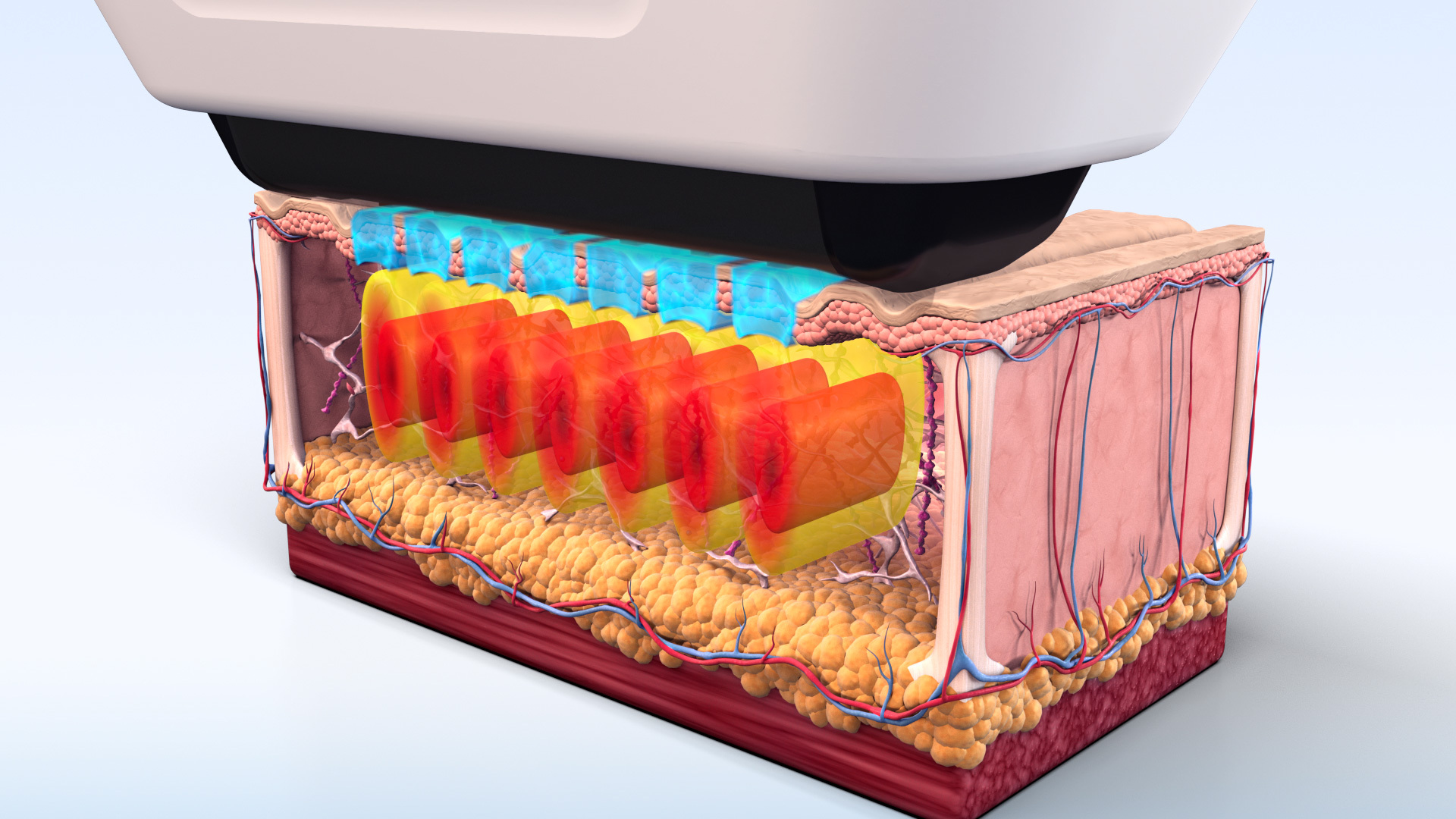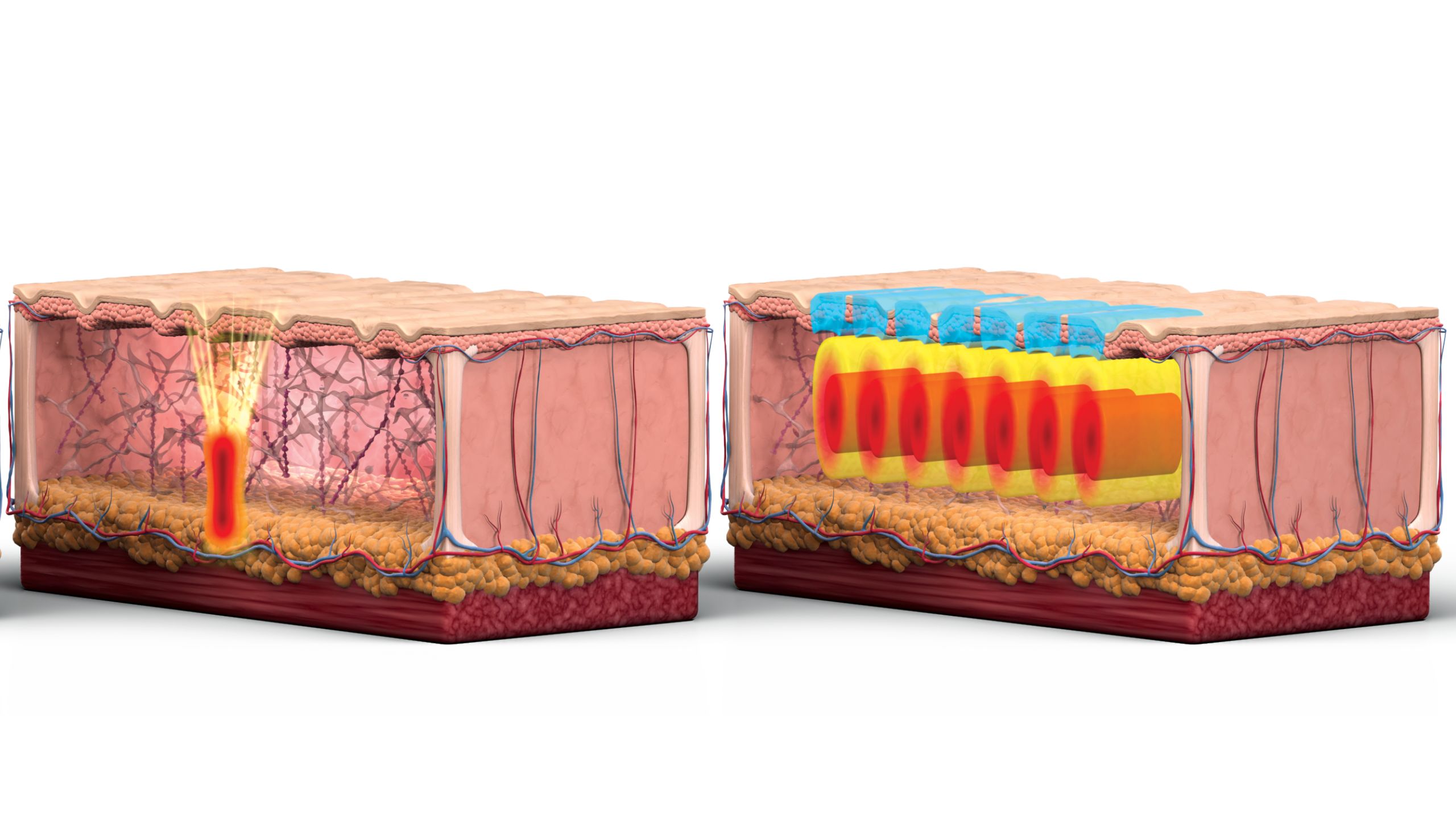Sofwave™ Technology

Treatment depth center of 1.5mm
Independent of energy level, targeting the effect in the mid-dermis and ensuring no damage to the underlying structures: bones, facial nerves, facial fat, and blood vessels.

Uniform effect in the tissue
Parallel delivery of ultrasound beams and large contact area allow for low sensitivity to tissue inhomogeneity, ensuring repeatable and controllable energy deposition in the skin.

Solid state energizer module
Seven robust and stable ultrasound transducers with no moving parts and no optics.

Direct contact ultrasound technology
Enabling integrated cooling and a real-time skin temperature monitoring mechanism for epidermal protection and accurate targeting of the thermal effect.

Treatment of all skin types
Ultrasound absorption is determined by the microscopic and bulk mechanical properties and is independent of skin color or pigmentation.

Coverage
Large coverage with each pulse and unique fractional impact to mid-dermis.

Sofwave™ Applicators
Our patented Synchronous Ultrasound Parallel Beam SUPERB™ technology,
combined with an integrated cooling system SofcoolTM, delivers precise
and controlled ultrasound energy directly to the mid-dermis
SUPERB™ Highlights

Unique Thermal Injury
Unique Thermal Injury unique 3D cylindrical-shaped thermal zones separated by regions of undamaged tissue, creating a controlled and fractional effect
Precise Depth
Depth of 1-2mm (centered at 1.5mm)
Optimal Thermal Stimulation
Achieved by heating the dermis to a temperature of 60-70°C for 4-5 seconds on each pulse
Enhanced Patient Comfort
Our Sofcool™ integrated cooling system with a real-time skin temperature monitoring mechanism, protects the epidermis and enhances treatment comfort

LIFT Applicator
The lift applicator utilizes 7 ultrasound transducers, working simultaneously to MAXIMIZE treatment efficacy with UNMATCHED volumetric coverage factor.
- Large Area Coverage
Energy is delivered PARALLEL to the skin, creating a DIRECTIONAL LIFTING effect. - High Efficiency
30-45 minutes treatment with MINIMAL downtime. - Treats ALL Skin Types.
PRECISE Applicator
The Precise applicator is designed to treat hard-to-reach and small areas such as around the eyes, mouth, and chin.
- Triple-Targeted Precision
Utilizes 3 ultrasound transducers to allow for TARGETED treatments - Personalized Treatment
Helps you CUSTOMIZE your treatments to MAXIMIZE patient results. - Personalized Treatment
Works SEAMLESSLY together with the ‘Lift’ applicator.

White Papers
Smart Mode of Action. Volumetric Directional Thermal Impact (VDTI)
The high-frequency ultrasound beams propagate through the tissue and create an array of volumetric cylindrical-shaped 3D thermal zones in the dermis separated by regions of undamaged tissue, thereby creating a fractional effect in the mid dermis.
The fractional ultrasound effect creates a controlled and directional thermal impact (60-70°C) parallel to the skin, at a depth of 1.5mm in the mid-dermis. The targeted treatment zones stimulate an inflammatory wound-healing response involving neo-collagenases and neo-elastinogenesis, all of which reduce fine lines and wrinkles.


